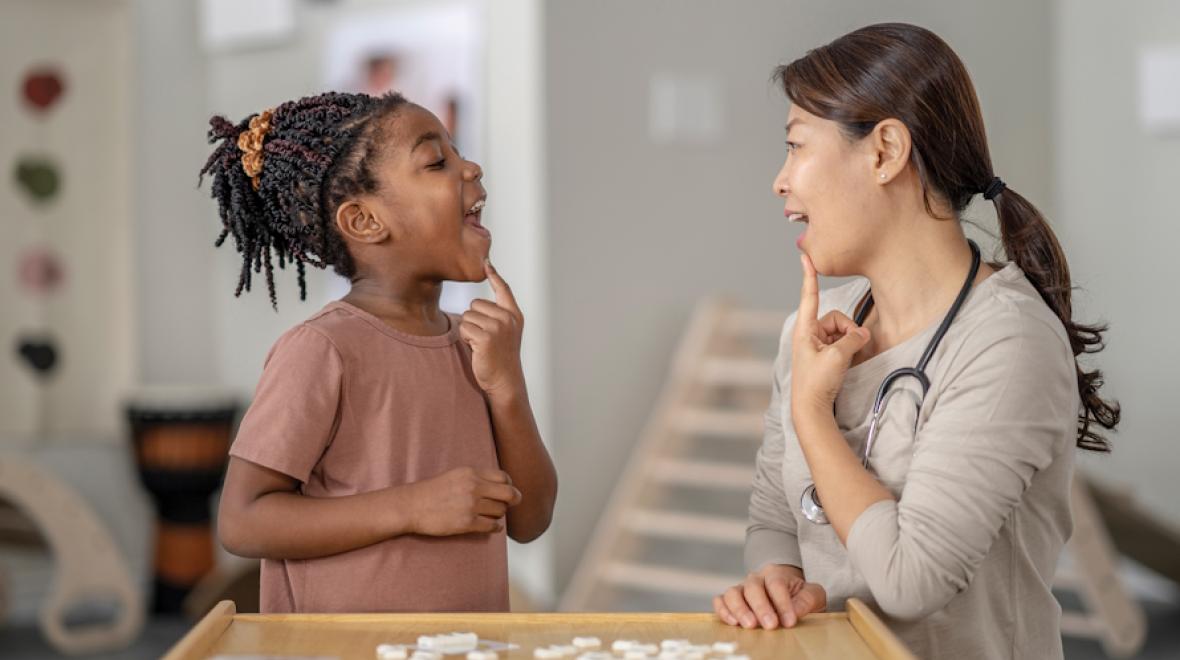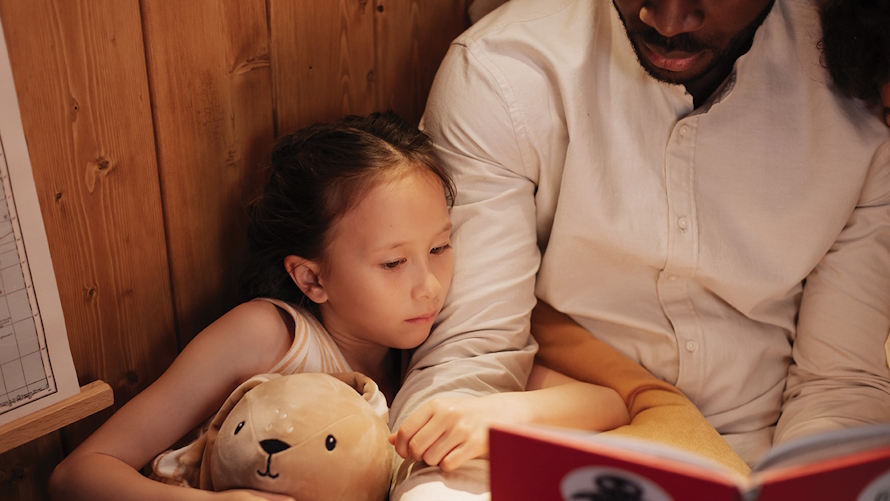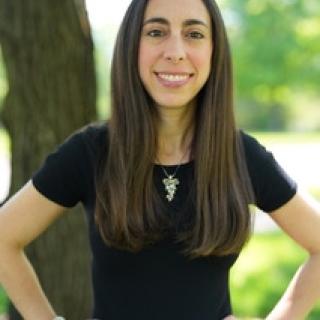
An articulation disorder refers to difficulty forming particular sounds in speech. The American Speech-Language-Hearing Association (ASHA) places articulation disorders under the umbrella of speech-sound disorders. They are common in elementary-age kids, affecting from 8% to 9% of children, according to Cleveland Clinic. So, if you have a child who is in speech therapy for an articulation disorder, you’re not alone.
The good news is that therapy is often very successful. In a study published by the Journal of Speech and Hearing Research, articulation therapy was found effective for all the groups — kindergartners, first- and second-graders — involved in the study, regardless of grade level or severity. For parents and other caregivers with questions or concerns, speech-language pathologists (SLPs) are a wonderful resource, and you shouldn’t hesitate to reach out for guidance and support.
Speech-sound disorder diagnosis
As children begin to speak and through their preschool years, some articulation errors are considered developmentally appropriate — mastery of these sounds is not yet expected. Some sounds, such as those that articulate the letters p, m and w, tend to be mastered at a younger age — around 2 years — as they are easier to produce. Other sounds, such as r and th, are acquired later, around the age of 5 to 6.
One way SLPs can determine if a child is likely to acquire a sound on their own is if the child is stimulable for that sound. This means that if they are given a model of the correct production, the child is able to imitate it correctly. If they can, they’re likely to master the sound without therapy, assuming the sound is not yet expected to be mastered at the child’s current age. Many speech sound errors will be corrected without intervention by age 4, but when sounds are not acquired by the expected ages, a child is diagnosed with an articulation disorder. These speech sound errors are treated by an SLP in a fun, motivating environment.
Causes and characteristics of articulation disorder
We don’t always know the causes of speech sound disorders, but research has investigated some possibilities. According to ASHA, the incidence of articulation disorders is higher in males than in females. Pre- and perinatal problems, including maternal stress or infections during pregnancy, complications during delivery, preterm delivery and low birthweight were found to be associated with a delay in speech sound acquisition and with speech sound disorders. Children with a family history of speech or language difficulties were more likely to have a speech disorder. Furthermore, persistent ear infections — often linked with hearing loss — have been associated with impaired speech development.
Articulation disorders may be characterized by sound omissions (e.g., cu instead of cup), sound substitutions (e.g., wabbit for rabbit), sound additions (e.g., bulack for black) or sound distortions (e.g., production of /s/ with incorrect tongue placement).
Articulation disorders in the school setting
As an SLP with experience in the elementary school setting, I found that a large percentage of my caseload was made up of children with articulation disorders. The most common articulation error I encountered was the incorrect production of /r/, often pronounced as /w/. Other common articulation errors on my caseload were /s/ and /l/. Chatterbox provides a chart illustrating the expected age of acquisition for each speech sound.
When children work toward accurate production of a speech sound during therapy, they begin at the sound level — this refers to practicing the correct production of the sound by itself. Then children work through a continuum toward use of the sound in unstructured conversation. For a speech sound to be mastered during conversation in the child’s natural environment, sounds must be practiced by themselves, then in syllables, words, phrases, sentences, paragraphs, structured conversation and unstructured conversation.
At each level, the child works toward acquiring a certain level of accuracy (e.g., 90% accuracy) over a predetermined number of trials (e.g., over two to three sessions) before moving on to the next level. These expectations are stated in the goal(s) within an individualized education plan (IEP). Working through a continuum of skill levels ensures children move forward once they’ve mastered a level and not earlier, enabling them to be successful. Children love celebrating their success every step of the way.
Understanding an SLP’s approach
Here is a sample of what a child might work on at each of these levels for the /r/ sound:
Isolation – The child will learn to produce the /r/ sound by itself. For example, I like to describe the production of /r/ as if the tongue were acting like a slingshot. You pull the tongue backward and upward in the mouth, like the stretch of a rubber band, until the back of the tongue touches the back of the mouth. For /r/, we focus on the tongue and ignore the lips — children tend to produce /r/ as /w/, which requires the lips for production, whereas /r/ does not. If we remind children to let their lips rest, they can focus on correct tongue placement for /r/.
- Syllables – /R/ can precede or follow a vowel, and at this level a child practices /r/ combined with every vowel sound. Different combinations include ar, air, ear, er, or and ire. Each of these combinations is slightly different, making the mastery of /r/ more challenging than other sounds.
- Words – A child practices words that begin with /r/, contain /r/ in the middle, and end with /r/. For example, rain, orange and bear each contain the /r/ sound in different word positions. Typically, a child focuses on /r/ in one part of a word until they’ve met that goal and then move on to /r/ in another word position.
- Phrases – Now that the child can say /r/ in all word positions, they’re ready to practice /r/ in phrases. For example, ran quickly, orange ribbons and ear of corn are phrases that contain words with /r/ in each position. A child may focus on phrases with /r/ in one part of the word before moving on to phrases with /r/ in another part of the word.
- Sentences – This step is identical to that of phrases, but full sentences are now practiced.
- Paragraphs – This level allows the child to practice the /r/ sound in paragraphs. This may include practicing the sound while reading out loud. The child learns to pay attention to the sound as it occurs within a reading passage.
- Structured conversation – At this level, the child practices /r/ during conversation within the speech therapy setting. The therapist may have the child pick topics from a cup or play a game requiring them to answer questions. The child is aware that their production of /r/ is being monitored.
- Unstructured conversation – At this level, an SLP typically observes a child in their classroom. They listen for the accuracy of production of the speech sound, ensuring that the child is using the sound correctly beyond the therapy room. The SLP will also check in with the parents to ensure the child is using the sound correctly at home. Once the child is using the sound correctly in all environments, they have mastered the sound and therapy is complete.

Continuing the practice at home
Transferring a newly learned skill beyond the therapy room requires practice and support. The following tips can aid in a child’s transition.
- When children incorrectly say a word that includes their target sound , a parent or caregiver can repeat the word using the sound correctly while giving the target sound emphasis.
- Don’t repeat your children’s speech errors. Instead, model the correct production.
- Reading out loud to your child provides a model for correct articulation in a relaxed environment.
- Narrating daily routines and modeling as you play with your child allows for natural modeling of target sounds.
- When practicing target sounds, focus on words in which your child has said the sound correctly. Choosing words they’ve been successful with increases the child’s motivation and provides a sense of accomplishment.
- If your child has speech homework, helping them will aid in the carryover of skills from the therapy room to the home environment.
- Remember that articulation therapy requires mastery at various levels; therefore, mastering the use of sounds in conversation will take time. If your child is working on a sound at the word level, you shouldn’t expect correct use during conversation just yet.
- Ask your child’s SLP for tips on how to produce target sounds so that you can use the same language at home. This consistency will reinforce skills learned in therapy.











